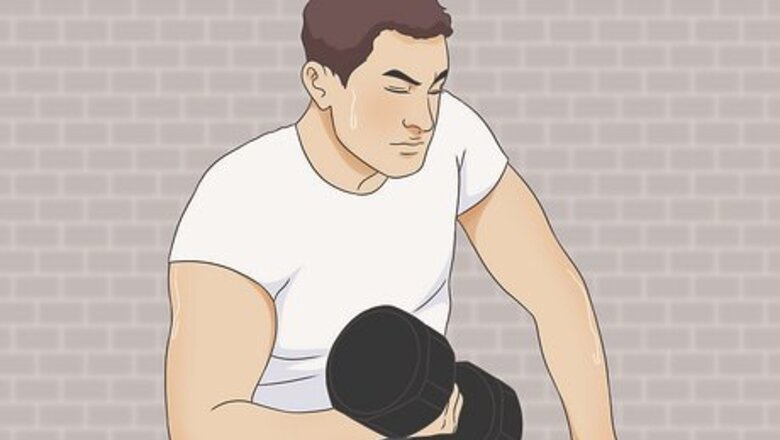
views
- Weight train and eat a healthy diet to get in shape. Most promoters look for athletic or bodybuilder physiques with large muscles and defined abs.
- Choose a stage name, music, and costumes that match your stripper persona.
- Network with other strippers and send your professional photos and information to revue producers or agencies to find work.
Honing Your Body & Persona
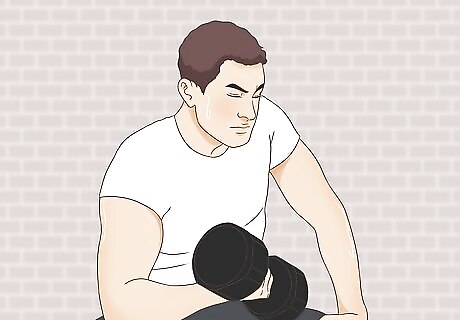
Lift weights to build muscle mass and get an athletic physique. Strippers help people visualize their fantasies, so get in the best shape you can—there’s no one “standard” look, but large muscles and defined abs are typically expected. Get a gym membership and start lifting weights 2-3 times a week. When you aren't in the gym, keep active with other activities such as running or swimming. You don't need to look like the Incredible Hulk, but clients and employers are generally looking for a bodybuilder or athlete build (or something close to it). Most clients prefer men who are 5’9” (175 cm) or taller, but shorter guys can still find work if they’re in great shape. Customers have varying tastes, so men with different body types can find work stripping. The super-chiseled bodybuilder look is not as dominant as it used to be.

Start a healthy diet to lose body fat and achieve a “shredded” look. Think of the saying “abs are made in the kitchen.” A lean, healthy diet makes your muscle mass look more defined, which increases your appeal as a stripper. Cut out fatty, processed snacks like chips and substitute fats, sugars, and salt for fruits, vegetables, and whole grains. Increase your intake of lean protein—chicken, fish, lean cuts of beef, eggs, and almonds are great options. Consider supplementing your diet with whey protein powder. Protein is essential for building muscle and also helps you feel full so you’re less tempted to snack. Start out by eating 14-18 calories per pound (6-8 calories per kg) of your body weight. Eating 200-300 calories above your maintenance level is enough to build noticeable muscle gains while losing fat. Aim to eat 1 gram of protein per pound (0.45 g per kg) of your body weight each day.
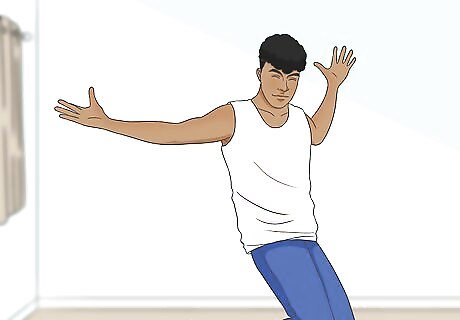
Take male burlesque, hip-hop, or breakdance lessons. A successful performance includes smooth, appealing body movements, so seek out dance classes in your area. Try a male burlesque or erotic dance class to teach you how to be sensual and alluring on stage (and remove your clothing smoothly). Learn some breakdance moves and hip-hop routines, too—these are very popular in stripper routines (and thrilling to watch as an audience member). Many male strippers are not fantastic dancers. Moving your body fluidly and pulling out impressive moves during your routine will help you stand out from your competitors. Dance classes are also a great opportunity to get more comfortable moving your body in front of a group of people.

Create a memorable stage name that represents your stripper persona. Your stage name is used to introduce you and communicate what sort of experience audiences can expect. Choose a name that sounds alluring and exciting—try a sexy pun or alliteration like Big Chest Charlie, or something that alludes to your persona like Frat-boy Phil. Whatever you choose, keep it short, sweet, and easy to remember and spell. Plain or generic names like John Smith don’t stand out. Switch to a name like “Andre Knife” or “Damian Chase.” Many well-known strippers go by their actual names. This makes them identifiable, but a stage name is also recognizable while protecting your identity.

Work on your social skills and get comfortable talking to strangers. As a performer, you’ll have to work half-naked in large, rowdy crowds and engage your customers one-on-one. Practice talking to strangers in line for coffee, at bars or restaurants, or even on public transportation until you feel confident in engaging people. Make eye contact and smile a lot to appear approachable and friendly. The goal is to make customers feel special. Have conversations that focus on the person you're speaking to rather than yourself. Your social skills are almost as important as your look when it comes to stripping. The hottest man on earth won’t make much money if he’s shy, nervous, or rude. If you have a fear of public speaking, interacting with new people, or are very socially self-conscious, performing as a stripper may be challenging—but not impossible!
Creating a Routine
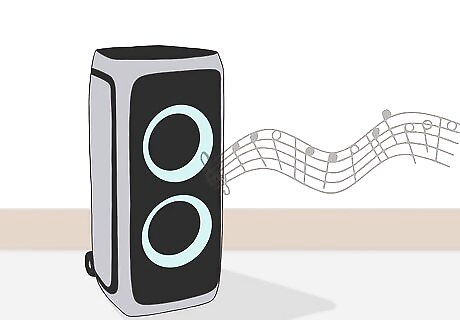
Get a quality portable Bluetooth speaker for private parties. While clubs or revue shows will have a sound system, most individual clients won't have speakers for you to borrow. Look for quality Bluetooth speakers with good sound quality and high volume. The music has to be loud enough so you can hear it over your clients’ cheers and squeals. Check online for reviews before committing to a speaker. When you work in a stage performance, you won't have to provide a sound system. However, many strippers get work by traveling to private parties, so it helps to have a portable speaker.
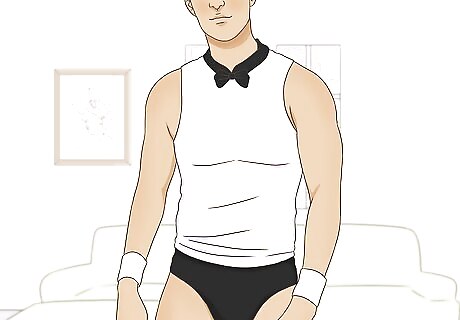
Assemble an authentic-looking costume. Skip the Halloween store costumes and go online to find second-hand or realistic uniforms (police and firefighter outfits are popular, but feel free to get creative and find something that suits your stripper persona). Look for tear-away clothing to incorporate—if you can’t find any you like, visit a tailor to add snaps or Velcro. Make sure to wear flashy, enticing underwear underneath it all, too! Consider a costume that complements your overall look. For example, try a football uniform if you have a stocky, athletic build, or a motorcycle outfit if you have long hair or lots of tattoos. Acquire more costumes as you work so you have more variety to show clients down the line. The more looks you have, the more fantasies you can fulfill! Avoid clothes with buttons or other fastenings that are hard to undo quickly and easily. Some stage shows provide the costume for you, but when you’re first starting out or working in someone's home, you’ll need to provide your own.

Choose songs that pull your routine's theme together. Pick music that matches the outfit you chose to make your routine feel cohesive. If your customers know these songs and can sing along to them, your dance will seem even better! Try to include songs that you enjoy dancing to, since that makes your performance more authentic. For example, a fireman routine could use songs like “Disco Inferno” or “Hot In Herre.” If you go for the classic cop look, “Bad to the Bone” or “Bad Boys” (yes, the theme song from Cops) are popular tracks.

Customize your songs into a mix. Playing every song in its entirety might make your performance seem long or low-energy. Instead, cut out the best parts and place them together so they flow well. Download a song mixing program—Audacity or GarageBand are free, easy-to-use options—and cut up your songs to assemble them into one track for your show. Try adding sound effects to your songs, like a police siren or fire truck horn, if it works well in your routine. These sounds can be found online (usually for free). Keep the music simple so it doesn’t draw attention away from you. For example, a bombastic rave track might be too stimulating for some clients.
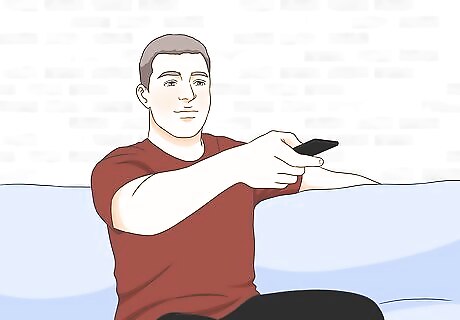
Watch male stripper performances for dance move ideas. Go out to see professional male strippers dance live to get the best research possible, or search for videos of male strippers online. Note what moves engage the crowd, how the performer paces their moves and tear-aways, and anything that you find appealing or that you could see yourself doing. Watch male burlesque shows, hip-hop dances, or any other movement-based performances that might inspire your routine.

Plan out the big moments of your routine, but leave room for interaction. Stripping is a performance, so know ahead of time where you want to put your flashiest moves. Pick some engaging, entertaining moves and place them at exciting spots during the songs (for example, you could slide off your jacket when the bass drops in your first song, then tear away your shirt when the next song begins). You don't have to choreograph every beat of each song. Leave room between the big moments to interact with the crowd, grab props, or move to another part of the stage. Keep track of where you’re at in the music during lap dances or other hands-on moments so you don’t miss your big beats.

Practice your dancing alone and in front of others. Work on your routine every chance you get. Memorize the music so you never get lost during a performance, and focus on making your movements effortless and fluid while keeping your face oriented towards the audience. Remember to meet the eyes of audience members and smile so they feel special. Dancing for others can feel vulnerable at first. Start out with people you trust, such as a significant other, a dance class, or a small group of friends.
Finding a Job
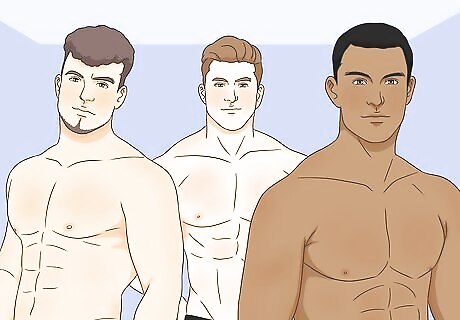
Get familiar with the 3 main types of male stripper work. Male strippers work in a variety of settings, each with their pros and cons. When you start out, explore strip club or strip-a-gram work. These fields are easier to break into as a beginner than revue shows, which usually have a more rigorous hiring process. Most male strippers are independent contractors regardless of what type of work they do. This means they aren’t salaried employees of a club or agency, and many work “normal” day jobs as well for guaranteed regular income. Male revue shows: Revue shows include a cast of male dancers and can be based in one city or tour around (think Chippendales or Thunder from Down Under). The producers usually provide costumes, music, and choreography. You’ll have to submit an application and/or audition to get in. Strip-a-gram work: Think private bachelorette or birthday parties. The performer is responsible for their own equipment, travel, and routine, and they're booked through an agency. These shows are more intimate and hands-on. Strip clubs: Club performers dance on small stages and provide lap dances for tips. Most performers have to pay a fee to the venue ($30-100) in order to perform, and competition is high between strippers. Clubs usually host amateur nights or auditions to scope out new talent.
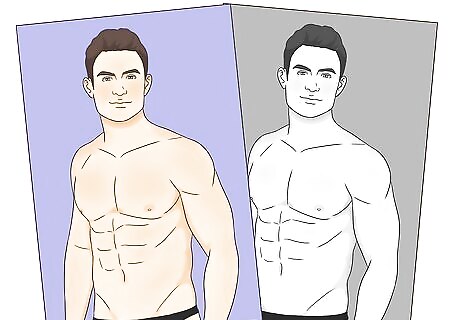
Get professional headshots and photos taken. Agencies and revue shows look at these photos to hire strippers and will use them to advertise you, so pay for a professional photo shoot. Make sure to get quality headshots as well as full-body photos, and keep your look simple and clean—no heavy makeup, props, or gimmicks. Smile and focus on the camera so your eyes look lively and inviting. Don’t wear your stage costume in your photos. Producers and agencies want to get a good look at you and your body without distractions. Get both black and white and color photos, then have the photography company duplicate them.

Contact legitimate agencies in your area. A good agency is vital for getting your name out there, especially for revue or strip-a-gram work. Search online for information before calling or emailing a company. Check to make sure they're a registered Ltd or PLC company with liability insurance, and look for good reviews from clients and performers. Work for a company that puts on regular shows, like a revue, to guarantee you have regular, weekly work. Stay away from companies that charge you to put up your photo or say you can't work for other agencies. Companies that seem to advertise dozens of male strippers are also bad business. Chances are they don't have enough work to spread around.

Contact revue shows for opportunities. Search out establishments that offer male stage performances, then email the show organizer to tell them that you're interested in joining them. Many times, they'll let you into shows for free so you can watch and get a feel for the expectations. Sometimes they'll give you an audition, depending on their needs at the time. Some revues’ websites will have an online application form where you can submit your photos, personal info, and work experience. In many cases, you’ll start out as a topless waiter until the presenters are confident in your performing abilities. Topless waitering is a great way to gain experience and set yourself up to apply and audition for revues, agencies, or other work.

Ask strippers for advice and about how the industry works. Whether you’re a topless waiter or still looking for your first gig, go out to shows and network with other performers. Many are happy to guide you in the right direction and give you tips on how to improve. They might also be able to set up interviews with their organization or with venue owners. Making friends with the other strippers will help you. They can guide you to performing opportunities that they can't do themselves.
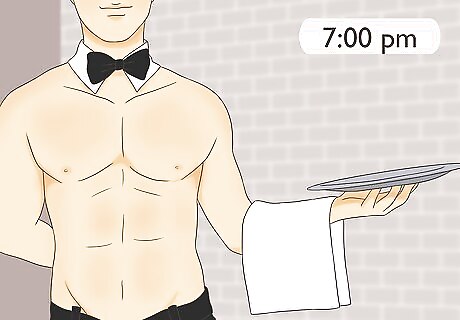
Be professional and show up for bookings on time. In the beginning, work might be hard to find. You’ll have to pay your dues as a topless waiter or pick up stripping work on short notice. If you want to get in the business, show up to these events prepared and on time. Unless you have a true emergency, try not to cancel at the last minute. A company that trusts you will give you more work. Losing that trust can be the difference between success or falling out of the industry.
Handling Clients
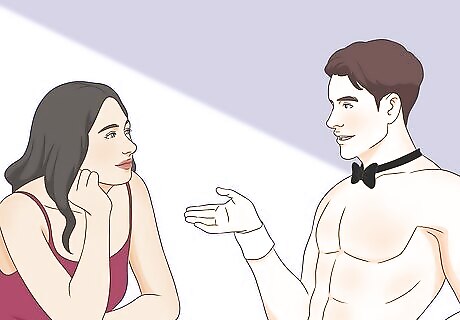
Make your clients feel special on and off stage. During performances, smile and look your clients in the eye—this shows warmth and confidence, which makes you fun to watch and memorable. When you aren’t performing, make small talk with them. Keep the focus on them by asking cheeky questions like “Tell me something interesting about yourself.” Making the client feel special makes your performance a success. They'll pay to see you again and recommend you to others.

Treat all customers with respect. As a stripper, you'll deal with an eclectic clientele of different ages, behaviors, tipping levels, and genders (depending on the venues you work in). Remember that your role as a performer is to please your customers. Maintain your charisma and smile as much as you can. Be courteous so the customers stay interested in your performance. Treating a customer poorly breaks the illusion of connection they have with you as a performer. You'll lose their business and might begin to develop a bad reputation.
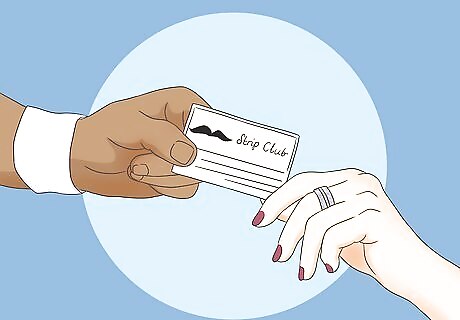
Promote yourself to potential clients in spots you know they enjoy. As a stripper, you’re partly a salesman, so do what it takes to bring people to your show. Spend time where you know your clients will be and utilize your social skills. For example, you might see Las Vegas performers chatting up potential clients on the strip, or club performers taking up customers at other bars. When someone asks you what you do for a living, tell them and invite them to a show. Strip clubs are always good locations for self-advertising, especially if you work there. Different types of people frequent different venues. For example, if you want to perform for affluent, middle-aged women, try spending time at a wine bar.

Ignore people who aren't interested in your performance. You can't please everybody since customers have different desires and tastes in a stripper or show. Stay aware of which customers are enjoying your act and which aren’t as intrigued. Disinterested customers won't look excited, may be distracted on their phone, or won’t smile at you when you interact with them. Focus on the people who enjoy your performance, since these are the ones that will pay you.

Steer clear of romantic or sexual relationships with clients. In a sexually charged atmosphere, you'll get plenty of customers who want more from you than just a show or lap dance. These relationships aren't always bad, but it's easy to go overboard and ruin the illusion of connection between stripper and customer. Remember that this is a job—treat your clients well, but don't take advantage of their interest in you. Many male strippers want to (and do) pursue sexual relationships with clients when they first start, but this often gets old quickly. Veteran performers enjoy collecting their money and heading home to bed just like any other worker.















Comments
0 comment